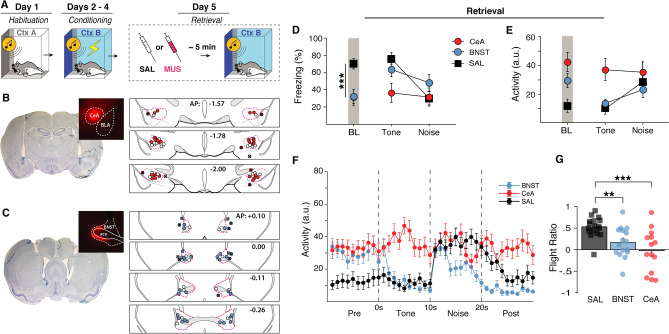Figure 6.
Pharmacological inactivation of either the BNST or CeA disrupts flight-like behavior. (A) Behavioral design. Histological summary of CeA (B) and BNST (C) cannula placements with representative thionin-stained sections and drug spread with fluorescent muscimol. Labeled anterior–posterior coordinates are relative to bregma. (D) averaged freezing data showing that CeA and BNST animals both showed reduced baseline freezing. BNST animals increased freezing to tone presentation and remained at higher freezing levels during white noise. CeA animals remained at low levels of freezing during the SCS. (E,F) averaged activity levels during the first SCS presentation showing that BNST animals showed a reduced flight response and CeA animals did not increase activity from tone to noise at all despite a lack of freezing behavior. This is reflected in the flight ratio (G). All data are represented as mean ± SEM pooled across sex [CeA (n = 14); BNST (n = 16); SAL (n = 16)]; *, **, and *** denote p < 0.05, p < 0.01, and p < 0.001, respectively.

